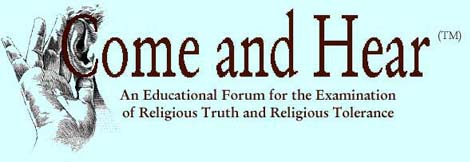The Roadmap
3. Critical Words of Talmud Study
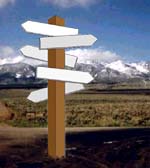
The Roadmap — Let the Rabbis tell us about the Talmud. Why is this fundamental book of Judaism unknown to most Americans?
One of the first steps in any subject is learning the key words that are used to describe the subject. For a newcomer to the Talmud, this may be difficult. Most of the words come from a non-European language written in non-Roman script. The English transliteration often varies from writer to writer. The definitions of key terms are not always constant in the mind of the speaker. But most difficult of all, the Talmudists do not use Aristotelian/Baconian forms of logic. To the Talmudist, a proposition may be simultaneously true and false; the Word of God may be the collective opinions of the Pharisee Sages, even when they disagree; and the nature of the Messiah may be, "without metaphor, the Jewish people." (24)
| Navigate This Site | |
 | |
| Home | |
| Valentine | |
| Dilling | |
| Talmud | |
| The Rabbis | |
| Supplement | |
| Glossary | |
| Download | |
| Admin | |
| | |
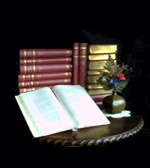
The Soncino Press Babylonian Talmud was translated into English under the editorship of Rabbi Dr. Isidore Epstein of Jews' College, London. Each of the six multi-volume Seders was published individually as it became available in the years between 1935 and 1948. The 63 tractates were translated by the leading rabbinical scholars of the day, and the final work was praised by many prominent rabbinical authorities, including two successive Chief Rabbis of the British Commonwealth. Each tractate included an introduction by the translator, a running commentary of extensive footnotes, a scriptural index, a glossary, and an index of words and subjects. In 1952, the individual indices were compiled and published as a separate volume. (29) The full set containing almost six million words was republished on fine paper in 1961 in 18 volumes. In about 1985, Soncino cut and pasted the original galleys into a larger format and republished the volumes with Hebrew and English on facing pages.
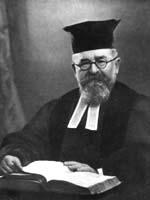
The late Dr. Joseph H. Hertz, who was the Very Reverend the Chief Rabbi of the British Empire from 1913 to 1946. Rabbi Dr. Hertz wrote forewords for three of the Soncino Seders, praising the Soncino rendering from the original Aramaic/Hebrew text.
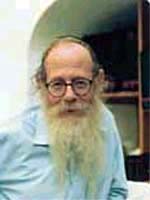
Rabbi Adin Steinsaltz, author of a modern comprehensive Babylonian Talmud commentary, and founder of the Israel Institute for Talmudic Publications. Rabbi Steinsaltz is a recipient of the prestigious Israel Prize. According to his web page, "Probably none living today can compare in genius and influence to Adin Steinsaltz, whose extraordinary gifts as scholar, teacher, scientist, writer, mystic and social critic have attracted disciples from all factions of Israeli society." Further information on Rabbi Steinsaltz can be found at his web page in Footnote 23.
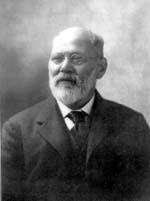
Rabbi Michael L. Rodkinson, author of History of the Talmud and New Edition of the Babylonian Talmud. Unfortunately, Rabbi Rodkinson published his translation without folio numbers, making it difficult to compare his text with other translations of the Talmud.
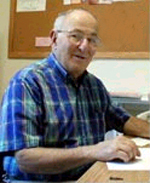
Rabbi Dr. Jacob Neusner is Research Professor of Religion and Theology at Bard College and Senior Fellow of the Institute of Advanced Theology at Bard. According to The Bard College web page, Rabbi Dr. Neusner "has published more than 850 books and unnumbered articles, both scholarly and academic and popular and journalistic, and is the most published humanities scholar in the world." He has been awarded nine honorary degrees, including seven US and European honorary doctorates, and holds fourteen academic medals and prizes. Rabbi Dr. Neusner received his Rabbinical Ordination and the degree of Master of Hebrew Letters from the Jewish Theological Seminary of America in 1960. (25).
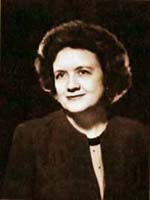
Elizabeth Kirkpatrick Dilling, American writer and public speaker, author of The Jewish Religion: Its Influence Today. Mrs. Dilling first worked to enlighten America about the brutality of Soviet Communism, but turned her attention to Judaism when her anti-Communist efforts were countered with charges of anti-Semitism. The story of her life and career in her own words can be found at the web page in Footnote 26.
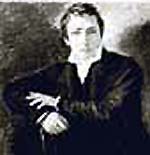
Johann Heinrich Heine (1797-1856), born in Dusseldorf, was a German poet of Jewish origin who was more highly regarded in France, England, and America than in his native country. Heine studied at the universities of Bonn, Berlin and Gottingen, and took a degree in Law in 1825. Heine's teacher in Berlin was G.W.F. Hegel; they both admired Napoleon. In order to make possible a civil service career, closed to Jews at that time, Heine converted to Protestantism. He died in Paris where he had lived from 1831 as one of the central figures of the literary scene. (27).

|
Beautiful old stories, Tales of angels, fairy legends, Stilly histories of martyrs, Festal songs and words of wisdom; Hyperboles, most quaint it may be, Yet replete with strength and fire And faith — how they gleam, And glow and glitter! — Johann Heinrich Heine (1797-1856), writing of the Talmud. (22) |

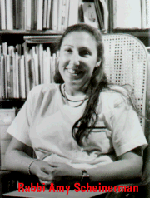
Rabbi Amy Scheinerman, of Bolton Street Synagogue in Baltimore, Maryland, officiates at services and life cycle events, provides pastoral counseling and develops religious education curriculums for her congregation. She has published several books including I Can Read Hebrew, a primer designed to teach children to read Hebrew fluently before they learn to read English. (15)

God made a covenant with Israel only for the sake of that which was transmitted orally. — Babylonian Talmud, Gittin 60b


He who wishes to be pious must [in the first instance particularly] fulfill the laws of [Seder] Nezikin. — Babylonian Talmud, Baba Kamma 30a

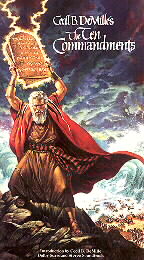
Moses of Hollywood (28)
In about 1275 B.C., Moses brought the Israelites out of Egypt. During their passage through the wilderness, Moses encountered God on Mt. Sinai and received the Law (Exodus 20-24). Questions arise: Why did God give some of His laws in writing, but give others orally, forbidding Moses to write them down? If God gave the Oral Law to Moses, why would Rabbi Akiba have to find "justifications" for Oral Law in the Scripture, more than a thousand years later?
For a short pictorial of the high-points in Judaic history, see the sidebar of More Critical Words of Talmud Study.
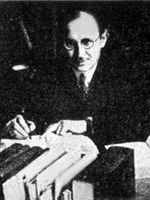
Rabbi Dr. Isidore Epstein, editor of the Soncino Talmud.
"No particular English version of the Bible is followed, as the Talmud has its own method of exegesis and its own way of understanding Biblical verses which it cites." — Rabbi Dr. Epstein (13)

You can help in the battle for Truth, Justice, and the American Way! Fight the forces of censorship and suppression of the Talmud, and bring about understanding between peoples of different faiths.
Download this site to your desktop computer.
Make CDs and distribute them to friends, neighbors, ministers, and community leaders.
Email your favorite essay to your email list.
Post your favorite essay to discussion forums.
Print your favorite essays and give them to those not on the Internet.
Flyers advertising Come-and-Hear.com can be distributed throughout your community.
 Genuine Come and Hear™ CDs do not contain executable programs. When making CDs, do not include any files that end in .exe, .com, .bat, .vbs, .doc, .pif, .sit, or .scr. The person receiving the CD should use his own browser to view the files. This helps to protect him from harmful programs and viruses.
Genuine Come and Hear™ CDs do not contain executable programs. When making CDs, do not include any files that end in .exe, .com, .bat, .vbs, .doc, .pif, .sit, or .scr. The person receiving the CD should use his own browser to view the files. This helps to protect him from harmful programs and viruses.
In any field of study, the internal logic used in the subject and the terms (nomenclature) are of utmost importance. Anyone who wishes to understand the subject or apply it must understand the logic and the nomenclature. There are, however, certain barriers that must be overcome when studying the Talmud.
Logic of the Talmud
In the West, we use a system of logic developed by the Greeks. One of our principles is, "not both A and not-A." That is, two opposing statements — such as "I was born blind" and "I was not born blind" — cannot both be true.
However, the Talmud and Talmudists are not restricted by this principle of logic. Two opposing statements can both be true at one and the same time. Famed Israeli Talmud scholar Rabbi Adin "Even Yisrael" Steinsaltz gives us an example. In the following, he states that on the issues where they contradict each other, opposing schools of Talmudists are both right.
One of the great historical controversies was that between the methods of the "houses" (schools) of Shammai and Hillel, which lasted for more than a century. It was eventually resolved in the famous dictum: "Both are the words of the living God, and the decision is in accordance with the House of Hillel." The fact that one method is preferred does not mean that the other is based on a misconception. It, too, is an expression of creativity and of "the words of the living God." When one of the sages ventured to say a certain theory was not to his liking, he was scolded by his colleagues, who informed him that it was wrong to say of Torah, "This is good and this is not." Such a view analogous to the case of the scientist who is not permitted to say that a certain creature seems to him "unappealing." This does not mean to imply that evaluations (even of appeal) should never be made; they should, however, be based on consciousness of the fact that no man the right to judge or to determine that a certain object lacks beauty from the purely objective point of view.
— Rabbi Steinsaltz (1)
The following Talmud excerpt shows a disagreement between the scholars of Shammai and Hillel. Both the Shammai and Hillel schools consider whether an act of consecration is valid, even when done in error.
(In this and other excerpts, footnotes have been omitted. To view them in the Come and Hear™ hypertext, follow the link at the end of the excerpt. The uppercase text indicates that the passage is Mishnah, an authoritative statement of Talmudic law. The term Mishnah will be explained more fully below.)
MISHNAH. BETH SHAMMAI SAY THAT CONSECRATION IN ERROR IS [EFFECTIVE] CONSECRATION, BUT BETH HILLEL SAY THAT IT IS NOT EFFECTIVE. FOR EXAMPLE, IF SOMEONE SAYS, THE BLACK BULL THAT LEAVES MY HOUSE FIRST SHALL BE SACRED,' AND A WHITE ONE EMERGES, BETH SHAMMAI DECLARE IT SACRED, BUT BETH HILLEL SAY THAT IT IS NOT SACRED. [OR IF HE SAYS,] 'THE GOLD DENAR THAT COMES INTO MY HAND FIRST SHALL BE SACRED, AND A SILVER DENAR CAME TO HIS HAND BETH SHAMMAI DECLARE IT SACRED, WHILST BETH HILLEL SAY THAT IT IS NOT SACRED. [AGAIN, IF HE SAYS,] 'THE CASK OF WINE THAT I COME ACROSS FIRST SHALL BE SACRED,' AND HE COMES ACROSS A CASK OF OIL, BETH SHAMMAI DECLARE IT SACRED, BUT BETH HILLEL SAY THAT IT IS NOT SACRED.
— Babylonian Talmud, Nazir 30b-31a
Soncino 1961 Edition, page 110
Remember, Rabbi Steinsaltz would have us understand of these two pronouncements that "both are the words of the living God." Neither Shammai nor Hillel can be wrong. Thus, the white bull is both sacred and not sacred. The silver denar is both sacred and not sacred. The cask of oil is both sacred and not sacred. We have also learned another lesson: the "words of the living God" are, in this case, synonymous with the words of the rabbis of the Shammai and Hillel schools. (11)
In order to understand the union of opposites being espoused by Rabbi Steinsaltz, it is necessary to glimpse the doctrines of Judaic mysticism (the Kabbalah). Sandford L. Drob, Ph.D., Director of Psychological Assessment and Senior Forensic Psychologist at Bellevue Hospital in New York, will help us understand. In 1987, Dr. Drob cofounded the New York Jewish Review, which featured interviews and debates among leading rabbis, including Adin Steinsaltz, Moshe Tendler, David Bleich, and Norman Lamm.
Dr. Drob writes prolifically on Kabbalism and can explain the union of opposites. He begins with a description of the Kabbalist Ein-Sof (sometimes spelled Ein-sof or En-Sof).
Ein-Sof, the Infinite God, has no static, definable form. Instead, the Kabbalists conceive God, the world and humanity as evolving together through, and thus embodying, a number of distinct stages and aspects, with later stages opposing, but at the same time encompassing, earlier ones. The Kabbalist's God is both perfectly simple and infinitely complex, nothing and everything, hidden and revealed, reality and illusion, creator of man and created by man. As Ein-Sof evolves it is progressively revealed as "nothing whatsoever" (Ayin), the totality of being, the Infinite Will (Ratzon) , Thought and Wisdom, the embodiment of all value and significance (the Sefirot), the wedding of male and female, and ultimately the union of all contradictions. Ein-Sof is both the totality of this dialectic and each of the points along the way. Ein-Sof must be constantly redefined, as by its very nature, it is in a constant process of self-creation and redefinition. This self-creation is actually embodied and perfected in the creativity of humanity, who through practical, ethical, intellectual and spiritual activities, strives to redeem and perfect a chaotic, contradictory and imperfect world.
— Sanford L. Drob (11) (emphasis added)
Certainly, this is a different view of God and logic that not many can understand. The Creator and the created are evolving together; statements can be true and false at the same time, as Rabbi Steinsaltz says. Thank you, Dr. Drob, for clarifying.
For background on the Kabbalistic approach to Old Testament interpretation (based on numerology and ciphers), see excerpts from Professor E.M. Butler's Ritual Magic in Israel's "One Indigenous Science" Appendix: Practical Kabbalah, "A Veritable Storehouse for Magicians …"
Definitions Vary
Aside from this non-Western approach to logic, another barrier to studying the Talmud is the nomenclature. The definitions of key terms can vary with the context and the speaker, and sometimes with the speaker's intent. "Torah" is sometimes the first five books of the Old Testament, or the Talmud, or the first five books of the Old Testament and the Talmud, or the entire body of Jewish religious literature. Other key terms can have varying meanings, too, as we shall see.
Key words can be spelled differently, too, depending on the transliteration from the Hebrew or Aramaic. We recommend liberal use of the Soncino Talmud Glossary, of course, but some terms warrant special attention. Usage of these terms reveals some surprising information:
- The Talmud is not, as is sometimes said, a commentary on the Old Testament. A book of commentary on the Old Testament is called Midrash.
- Rabbinical Judaism considers the authority of the Talmud is equal to, or senior to, the authority of the Old Testament.
- The "Oral Law" of the Talmud may be Divine Revelation (like the New Testament or the Koran), or it may be the customs of men — officially accepted as the word of God.
- The revered Rabbi Akiba (who lived between 50 and 135 A.D.) devised Scriptural justifications for folk practices that had been accepted by prior generations.
- Jews who reject the Oral Law of the Talmud in favor of the Written Law of the Old Testament have been denounced as "idolaters."
- Genesis, Exodus, Leviticus, Numbers, and Deuteronomy, as presently written, may have been at one time lost and reconstructed from memory by the High Priest Ezra, after his return from the Babylonian Exile.
The terms to be discussed are these: Exegesis, Pharisee, Pentateuch, Midrash, Torah, Divine Law, Oral Law, Mishnah (sometimes spelled Mishna, plural form is Mishnayoth), Talmud, Halachah (sometimes spelled "halackah" or "halakhah," plural form is "halakot" or "halakoth," etc.), Haggadah (sometimes spelled "hagada" or "aggadah"), and Gemara.
Exegesis
The word exegesis is often used when discussing the Talmud. An exegesis is an inference, an explanation, or interpretation. The word is derived from Greek:
ex, out of + hegeisthai, lead. (14)
The Talmud has its own method of exegesis, as explained in the Method and Scope section of the "Introduction by the Editor" to each of the Seders of the Soncino Babylonian Talmud:
No particular English version of the Bible is followed, as the Talmud has its own method of exegesis and its own way of understanding Biblical verses which it cites. Where, however, there is a radical departure from the English versions, the rendering of a recognised English version is indicated in the Notes. References to chapter and verse are those of the Massoretic Hebrew text.
— Rabbi Dr. Epstein (13)
The Jewish Encyclopedia calls exegesis Israel's "one indigenous science." A more lengthy and detailed analysis of the science of exegesis is available in Israel's "One Indigenous Science", which, if the reader is following these studies in sequence, appears as #5 in The Roadmap series.
As you read the Talmud, you will have the opportunity to consult Biblical cites to review the process of Talmudic exegesis. Please note that each page of the Talmud here presented contains a link to an on-line Bible text service that includes many of the standard translations.
Pharisee
The Pharisees were a school of learned men in ancient Israel. They were also a ruling political party. Their rivals were the Sadducees, another school of learned men. It was the Pharisees who developed and passed down Oral Law and eventually committed it to writing. For the early history of the Pharisees and their relationship to Oral Law, see Introduction to Seder Nezikin by the Very Reverend the Chief Rabbi of the British Commonwealth, the late Jacob H. Hertz, "Origins," Section I.
Rabbi Dr. Finkelstein, who for 30 years was president of the Jewish Theological Seminary of America, puts it this way:
Pharisaism became Talmudism, Talmudism became Medieval Rabbinism, and Medieval Rabbinism became Modern Rabbinism. But throughout these changes of name, inevitable adaptation of custom, and adjustment of Law, the spirit of the ancient Pharisee survives unaltered. When the Jew reads his prayers, he is reciting formulae prepared by pre-Maccabean scholars; when he dons the cloak prescribed for the Day of Atonement and Passover Eve, he is wearing the festival garment of ancient Jerusalem; when he studies the Talmud, he is actually repeating the arguments used in the Palestinian academies.
— Rabbi Dr. Finkelstein (31)
A Pharisee, then, was a person who was learned in the Oral Law, and who subscribed to a particular world view, largely contained in the Talmud. In fact, contemporary rabbis are directly attuned with the Pharisees of Jesus' time through long and intensive study of the Pharisaic teachings in the Talmud; those teachings down to Jews through synagogues, Temples, community educational activities, and to children through Jewish day schools. Contemporary rabbis do not call themselves Pharisees, however. To call a contemporary rabbi a Pharisee is taking poetic license, though surely there is much truth in the statement.
The Jewish religion as it is today traces its descent, without a break, through all the centuries, from the Pharisees.
— Universal Jewish Encyclopedia (32)
Pentateuch
The Pentateuch is the first five books of the Old Testament, sometimes called the books of Moses. Those books are Genesis, Exodus, Leviticus, Numbers, and Deuteronomy.
Christians sometimes call the Pentateuch "Mosaic law" because, according to their faith, God dictated those books to Moses to be a law for the Hebrews in their new land of Israel.
The Jews call the Pentateuch "Written Law" to distinguish it from the Oral Law contained in the Talmud.
Midrash
The word Midrash appears often in Jewish religious literature, and in the Soncino Talmud, though it is not defined in the Soncino Talmud Glossary. Here is a workable definition:
"A verse by verse interpretation of Hebrew Scriptures [Old Testament] …" (2)
The Universal Jewish Encyclopedia tells us that:
The earliest Hebrew term for exegesis is Midrash, literally "seeking." When it deals with interpretation of law, it is called Midrash Halachah; when it deals with non-legal matters, it is called Midrash Haggadah.
— Universal Jewish Encyclopedia (30)
Rabbi Amy Scheinerman, a rabbi of a Reform Judaism congregation in Baltimore, considers the art of Midrash is alive and vital today:
Midrash is the art of extending and interpreting Torah by commenting on the text, answering unanswered questions in the text, or deducing laws and traditions from the text. From the time the Torah was closed and canonized, Jews have been interpreting and reinterpreting the sacred writings of the Torah. Many of these interpretations are expressed through Midrash. There are two basic types of midrashim: Halakhic midrashim deal with legal matters; Aggadic midrashim deal with moral and spiritual issues and tend to read like stories. The sages of old wrote midrashim to teach and inspire, explain esoteric legal matters, and interpret the meaning of events of their day. We, today, do the same. The art of midrash is alive and vital today, and you can participate.
Would you like to read the midrashim of my students?
— Rabbi Scheinerman (15)
Torah
Jews and Christians generally agree that the Torah is God's word. Christians usually understand Torah to consist of the Old Testament. However, when rabbinical scholars use the term, Torah may consist of:
- The Pentateuch (books of Moses), or,
- The entire Old Testament (sometimes called "Hebrew Scriptures") or,
- The "Oral Law" contained in the Talmud, or,
- The Pentateuch and the Talmud, or,
- The Old Testament, the Talmud, and the entirety of Jewish religious writings, including those of Maimonides, Rashi, etc., or
- Any combination of the above.
First, let us examine the Soncino Press definition of Torah:
TORAH (Lit., 'teaching', 'learning', 'instruction'); (a) the Pentateuch (Written Law); (b) the Mishnah (Oral Law); (c) the whole body of Jewish religious literature.
The reason for multiple definitions is explained by the Very Reverend the Chief Rabbi of the British Empire (1913-1946), the late Rabbi Dr. Hertz:
The knowledge of the contents of that revelation, they [the scribes] held, was to be found in the first Instance in the Written Text of the Pentateuch; but the revelation, the real Torah, was the meaning of that Written Text, the Divine thought therein disclosed, as unfolded in ever greater richness of detail by successive generations of devoted teachers …
— Rabbi Dr. Hertz (3)
So Torah is not just Scripture. Torah is also the interpretation of Scripture, and the interpretation of interpretations. In its extensive definition, Torah is the entire body of Jewish religious literature, and Jewish religious literature is whatever the rabbis accept as such. It is an ever-expanding library that may contain contradictory teachings, and often does. See Logic of the Talmud, above.
Thus in Judaism, divine revelation is not dependent on messiahs, prophets, or saints, as in some other religions; for the Jews, divine revelation comes about through rabbis passing down the teachings from one generation to the next, each adding his own interpretations and ideas to the material. Indeed, some Jewish scholars assert that the Jewish people as a whole constitute the Messiah. (24)
Let us have a look at some other authoritative statements about the relationship between Torah and Talmud.
For the Pharisees, Torah IS The Talmud
Rabbi Dr. Hertz continues. In the following, he borrows another's words to make his point that the Torah is the book of the Pharisees. The Old Testament was not the book of the Pharisees, of course. The Talmud is the record of Pharisaic teachings (see What Is the Talmud?). That is, Hertz states that the Talmud is the supreme document of religious revelation.
'Apart from the direct intercourse of prayer, the study of Torah was the way of closest approach to God; it might be called the Pharisaic form of the Beatific Vision. To study Torah was to think God's thought after Him …'
— Rabbi Dr. Hertz, quoting Kepler (3)
Even in the days of the Talmud Sages, the word "Torah" meant Talmud, as shown by the following excerpt from the Soncino Talmud.
MISHNAH. … THE TIMES FOR CONJUGAL DUTY PRESCRIBED IN THE TORAH ARE: FOR MEN OF INDEPENDENCE, EVERY DAY; FOR LABOURERS, TWICE A WEEK; FOR ASS-DRIVERS, ONCE A WEEK; FOR CAMEL-DRIVERS, ONCE IN THIRTY DAYS; FOR SAILORS, ONCE IN SIX MONTHS. THESE ARE THE RULINGS OF R. ELIEZER.
— Babylonian Talmud, Tractate Kethuboth 61b
Soncino 1961 Edition, page 369
Old Testament Believers Labeled "Idolaters"
So strong is the Jewish faith in the Pharisaic ideas contained in the Talmud, that Jews who reject the Talmud have been labeled idolaters. In his History of the Talmud, Rabbi Michael Rodkinson writes of the conflicts between the Sadducees and the Pharisees. The Sadducees interpreted the Old Testament literally, while the Pharisees interpreted it figuratively. (4) Eventually the Pharisees triumphed, and the Sadducees ceased as a religious sect. As can be seen in the following Mishnah regarding the laws of menstruation, Sadducees and Samaritans are not regarded as Israelites.
MISHNAH. THE DAUGHTERS OF THE SADDUCEES, SO LONG AS THEY ARE IN THE HABIT OF WALKING IN THE PATHS OF THEIR FATHERS, ARE TO BE REGARDED AS SAMARITAN WOMEN. IF THEY LEFT THOSE PATHS TO WALK IN THE PATHS OF ISRAEL, THEY ARE TO BE REGARDED AS ISRAELITISH WOMEN. R. JOSE RULED: THEY ARE ALWAYS REGARDED AS ISRAELITISH WOMEN UNLESS THEY LEAVE THE PATHS OF ISRAEL TO WALK IN THE PATHS OF THEIR FATHERS.
— Babylonian Talmud, Tractate Niddah 33b
Soncino 1961 Edition, pages 232-233
The translator of Soncino Tractate Niddah, Rev. Dr. Israel W. Slotki, confirms this exclusive definition of "Jew" as Pharisee in his introduction:
CHAPTER IV is concerned with the condition of uncleanness of non-Jewish women, such as Samaritans, Sadduceans and idolaters, and of women in protracted labour.
— Rev. Dr. Slotki (9)
Rabbi Rodkinson writes of another group of Jews called the Karaites who oppose the Pharisees. The Karaites base their faith on the written law contained in the Pentateuch.
The toleration of the Pharisees and of their teachings is well known. The disciples of the Beth Hillel have done all that lay in their power to bring them [Karaites] into the House of Israel: they credited them in regard to purification; they permitted them to be counted in the number of three for the benediction over the meal [Hebr. characters]; and in fact, wanted to consider them as Israelites for all purposes, but their animosity and trickery increased to such an extent that they could no more be tolerated, and therefore, the leaders of Israel were compelled to regard them in all respects as idolaters, and prohibited their bread, wine, and oil. Rabbanism endeavored, with all their might, to draw near them and debate with them, until they convinced themselves that their hatred toward Israel is so great that they said "[Hebr. characters]" (the rents will never be sewed together), "the Karaites will never make up with us," and they are up to date regarded as idolaters.
— Rabbi Rodkinson (16)
Note that Rabbi Rodkinson states that "to date" the Karaites are regarded as idolaters. Rabbi Rodkinson wrote those words in 1903. The designation is unchanged since ancient times.
Contemporary Orthodox Jews Repudiate Old Testament Teachings
In December, 1999, leading Orthodox Jewish advocacy groups filed an amicus curiae brief with the US Supreme Court concerning capital punishment. The National Jewish Commission on Law and Public Affairs (COLPA) and the American Section International Association of Jewish Lawyers and Jurists IAJLJ) were represented by Nathan and Alyza Lewin. Nathan Lewin is on the Board of Governors of the Union of Orthodox Jewish Congregations of America ("Orthodox Union"), an organization that speaks on behalf of 1,000 Orthodox synagogues.
The brief states clearly that the Jewish religion rejects and condemns Old Testament methods of capital punishment. The methods described in the Talmud are considered religiously correct. For further information, see Capital Punishment 1.
Talmud Is Primary Source Of Law For Jews
In the following, Rabbi Adin Steinsaltz tells us that the Talmud, not the Old Testament, is the governing book of Judaism.
Even before the Talmud was completed, it was evident that this work was to become the basic text and primary source for Jewish law. It is actually the last book of source material in Jewish literature, since the works that followed were to a large extent based on it, derived their authority from it, and consulted it whenever necessary for elucidation of theoretical and practical problems.
— Rabbi Steinsaltz (17)
This view confirmed by the Talmud. However, before we read the relevant excerpt, it would be useful to define another key term.
Halachah / Halakha
Halachah (Lit., 'step', guidance'), (a) the final decision of the Rabbis, whether based on tradition or argument, on disputed rules of conduct, (b) those sections of Rabbinic literature which dealt with legal questions, as opposed to the Aggadah [Haggadah.]
— Soncino Talmud Glossary
Soncino 1961 Edition, pages 734-735
Rabbi Rodkinson defines Halachah (Halakha) thus:
Halakha means custom, usage, practice; then, an adopted rule, a traditional law. In a more extended meaning, the term applies to matters bearing upon that law.
— Rabbi Rodkinson (18)
Rabbinical Decisions, Not Scripture, Rule Conduct
In Tractate Hagigah 10a, Rab quotes from Zechariah 8:10 to support his statement on the seniority of the Talmud:
GEMARA. … Neither was there any peace to him that went out or came in, Rab said: As soon as a man goes forth from Halachic to Scripture study he no longer has peace.(1)
— Babylonian Talmud, Hagigah 10a
Soncino 1961 Edition, pages 49-50
The translator, Rabbi Prof. I. Abrahams, amplifies the text with this footnote:
- Because the Halachah provides the ultimate ruling for conduct; cf. Hershon, Talmudic Miscellany, Ch. XI, No. 33, and the lines in Longfellow's 'Golden Legend' beginning: The Kavvala and Talmud lore, etc. (quoted in Streane's Chagigah).
— Rabbi Prof. Abrahams
— Talmud Comes First
Rab Judah is one of the most frequently quoted Sages in the Talmud. Note that Rab Judah did not advise studying the Old Testament. Instead, he advised fulfilling the laws of Seder Nezikin of the Talmud.
GEMARA. … Rab Judah said: He who wishes to be pious must [in the first instance particularly] fulfil the laws of [Seder] Nezikin.
— Babylonian Talmud, Baba Kamma 30a
Soncino 1961 Edition, page 161
Talmud Is Part Of "Torah"
With the passing of Rabbi Dr. Hertz, Israel Brodie became the Chief Rabbi of the British Commonwealth. Here are the words of the Very Rev. the Chief Rabbi Israel Brodie concerning the relationship between Talmud and Torah.
Bible, Mishnah and Talmud have formed the three main basic categories of the Torah discipline.
— Rabbi Brodie (19)
Famed Israeli Talmudic scholar Rabbi Adin "Even Yisrael" Steinsaltz says that the Talmud is part of the Torah.
In order to understand and appreciate the unique nature of the Talmud, one must first have a clear understanding of the unique Jewish concept of Torah study, of which studying the Talmud is a distinctive and characteristic part.
— Rabbi Steinsaltz (5)
Recall that Rabbi Steinsaltz explained to us earlier that even opposing statements within that Talmud are all "words of the living God." Rabbi Steinsaltz is obviously a brilliant and well-supported individual. According to his web page, he is currently translating the Talmud into English, French, and Russian. He is the founder of the Israel Institute for Talmudic Publications, and has enjoyed the backing of Israeli presidents and prime ministers; he is a recipient of Israel's highest honor, the Israel Prize. (6)
Talmud scholar Rabbi Dr. Jacob Neusner states that the Old Testament (Hebrew Scriptures) AND the Talmud make up the Torah of the Jews, and that the Talmud is received as God's word.
The Koran … is received by Muslims as God's word, as is the Bible by Christians and the Torah — comprising the Hebrew Scriptures or Old Testament and the oral traditions ultimately preserved in the Talmud — by the faithful of Judaism.
— Rabbi Dr. Neusner (7)
Now let us hear from Rabbi Dr. Isidore Epstein, editor of the Soncino Talmud, and later, the president of Jews College of London.
The civil and criminal law was regarded by the Jews as a part of the Divine Revelation — the Torah.
— Rabbi Dr. Epstein (21)
Talmud Is Oral Torah
Rabbi Amy Scheinerman (introduced above), writing now for the Union of American Hebrew Congregations, says that the Talmud and its Mishnah (see below) have virtually the same status as the Old Testament:
For Orthodox Jews, the Hebrew Scriptures are a divinely authored text and therefore every commandment contained therein must be obeyed. The Mishnah and Talmud are considered to have virtually the same status and are called Oral Torah.
Rabbi Scheinerman (10)
The Living Torah
Let us revisit our earlier quote from Rabbi Scheinerman. In that quote, the rabbi states that "Midrash is the art of extending and interpreting Torah," (15) and that her students are actively engaged in the activity today. We could interpret her words to mean that the Torah is a living entity, growing continuously as students produce commentary on what has been written before. This sense of Rabbi Scheinerman's remark is in agreement with Chief Rabbi Dr. Hertz, who wrote (quoted above) that "the real Torah, was the meaning of that Written Text, the Divine thought therein disclosed, as unfolded in ever greater richness of detail by successive generations of devoted teachers …" (3)
"Divine Law" May Be Man-Made by Gentiles
The new student of the Talmud may find the usage of the term "Divine Law" confusing. Rabbinical scholars may use that term to denote law made by Gentiles.
Samuel of Nehardea … was an epoch-maker in Judaism. He laid down the principle, based on an utterance of Jeremiah the Prophet, that has enabled Jews to live and serve in non-Jewish countries. Dina d'malchutha dina, he ruled; i.e., 'In all civil matters, the law of the land is to us Divine Law.'
— Rabbi Dr. Hertz (8)
"Divine Law" May Be Man-Made by Jews
In this passage, Rabbi Dr. Isidore Epstein, editor of the Soncino Talmud, states the Talmudic legal system is tantamount to the very law of God. The sequence is clear: Once the laws are tested and pass the test, they become the law of God:
Thus the object of the legal system was not to preserve a particular dynasty or a certain form of government, but to establish social righteousness, and to maintain thereby a constant, close, inseparable connection between ethics and law, both flowing from the same Divine source … All laws, regulations and enactments had authority only in so far as they were able to stand the ethical test of the Torah.
Once they passed this test, they were no longer regarded as man-made, but became identified with the very law of God.
— Rabbi Dr. Epstein. (20)
Thank you for your consideration of the above,
Carol A. Valentine, Ear@Come-and-Hear.com
July 14, 2003 ( This article is on line at http://www.come-and-hear.com/editor/critwords_1.html )
|
Navigate Carol Valentine's America Under the Talmud — Will It Work for US? | |||||
 Howdy! |
 The Roadmap |
 Censorship |
 Death Penalty |
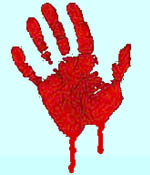 Blood Ritual |
 New America |
| Navigate This Site | |
 | |
| Home | |
| Valentine | |
| Dilling | |
| Talmud | |
| The Rabbis | |
| Supplement | |
| Glossary | |
| Download | |
| Admin | |
Endnotes:
- This and other Come and Hear™ Studies on Talmudic Judaism can be found online:
- http://www.come-and-hear.com/editor
- The Jewish Religion: Its Influence Today by Elizabeth Dilling, complete with all 300 exhibits, can be found online:
- http://www.come-and-hear.com/dilling
- Soncino Babylonian Talmud tractates, with Forewords, Introductions, Glossary, List of Abbreviations, and footnotes. Now you can study the Babylonian Talmud in full context and with the running commentary of the finest scholars of Judaism:
- Tractate Berakoth: http://www.come-and-hear.com/berakoth
- Tractate Shabbath: http://www.come-and-hear.com/shabbath
- Tractate Yebamoth: http://www.come-and-hear.com/yebamoth
- Tractate Kethuboth: http://www.come-and-hear.com/kethuboth
- Tractate Nedarim: http://www.come-and-hear.com/nedarim
- Tractate Nazir: http://www.come-and-hear.com/nazir
- Tractate Sotah: http://www.come-and-hear.com/sotah
- Tractate Gittin: http://www.come-and-hear.com/gittin
- Tractate Baba Kamma: http://www.come-and-hear.com/babakamma
- Tractate Baba Mezi'a: http://www.come-and-hear.com/babamezia
- Tractate Baba Bathra: http://www.come-and-hear.com/bababathra
- Tractate Sanhedrin: http://www.come-and-hear.com/sanhedrin
- Tractate Abodah Zarah: http://www.come-and-hear.com/zarah
- Tractate Horayoth: http://www.come-and-hear.com/horayoth
- Tractate Niddah: http://www.come-and-hear.com/niddah
- Tractate Tohoroth: http://www.come-and-hear.com/tohoroth
- Search the Talmud http://www.come-and-hear.com/tindex.html
- Download all the above resources for local study, CD, or mirror web site:
- http://www.come-and-hear.com/download
